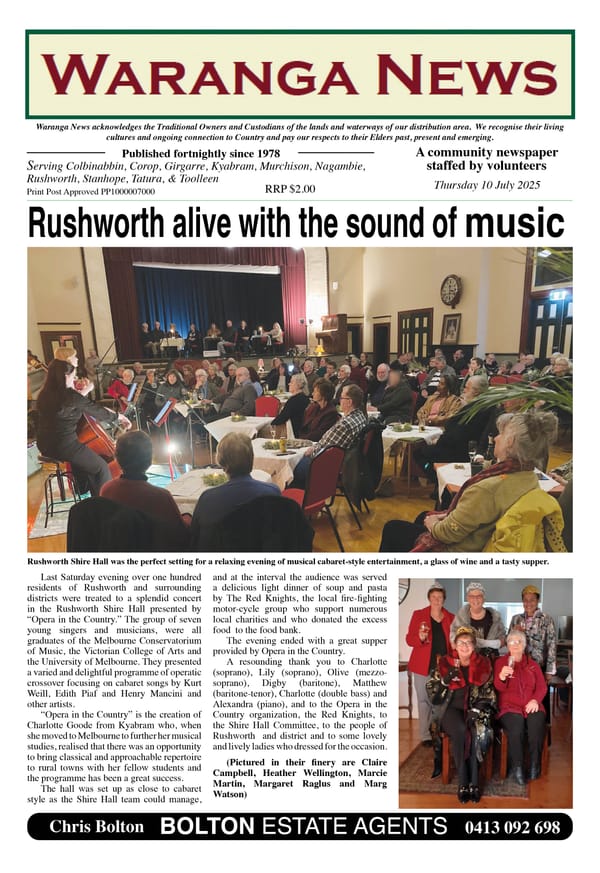19. The impact of floods

Chinese market gardeners who set up close to the Goulburn and Campaspe Rivers and other smaller waterways were subject to flooding, especially before the rivers were increasingly controlled by structures built to facilitate irrigation. The Chinese set up their own irrigation systems to draw water from the rivers and creeks for their crops.
1870 was a year of very bad flooding on the Goulburn and Campaspe Rivers. At Echuca in November, the Campaspe was backing up and flooding large parts of the town. The surprising number of twenty Chinese gardeners, who were operating close to the river, had to abandon their properties.1 Further south down the river at Runnymede and Rochester, there was severe flooding, affecting the Chinese gardens near the river.
In 1887 at Nagambie, a severe flood washed away the Chinese gardens along the river there. The gardeners’ huts were destroyed, and people had to be rescued from the raging torrent.2 The floods that year also affected Tatura, where the “Chinamen’s gardens”, just outside Tatura on the Rushworth Road, were flooded.3
MURCHISON FLOODS
One of the biggest floods to ever hit Murchison occurred in 1916. Chinese market gardeners suffered significant damage to their gardens and infrastructure, as well as loss of other assets that were washed away. They were also lucky to be alive at a time when communications were more difficult and flood warnings often came too late. The Murchison Advertiser reported that “As usual, the Chinese gardens and houses, in the vicinity of the railway bridge, were entirely submerged, and the occupants had a very narrow escape indeed, being compelled to wade out to high land waist deep in water at 3 am on Monday morning.”4
The occupants did not have time to even take their horse with them which was left tethered in the stable. Fortunately, the horse was later rescued by Mr G F Heazlewood and others, “with a fine piece of oarsmanship.” The horse was already shoulder-deep in water by the time a rescue party arrived. Before they could rescue it, they had to demolish a wall of the stable. “A long line was then attached to the animal, and he was taken through heavy currents, across fences and around trees, to a place of safety.”4
As well as rescuing the horse, two dogs and some other assets were saved, but all things considered the Chinese suffered some of the greatest losses amongst the citizens of Murchison.3 Their whole livelihood was destroyed, and they had to start again almost from scratch.
FLOODED AGAIN
Less than a year later, after re-establishing their gardens and infrastructure, the Chinese were flooded out again. In anticipation of more floods after the 1916 inundation, they had gone to considerable effort to erect earthen banks around their property. However, the floodwaters soon breached these, the result of much hard work over the previous few months.
The only saving grace in 1917 was that the occupants had received some advance warning. They had sufficient time to remove their horses, carts and other assets which could be moved, out of harm’s way. Of course, dwellings and the all-important gardens were destroyed again.
This time the Chinese were so disheartened that they decided to abandon the site near the railway bridge. They went into negotiations with Mr J Parker to lease a block of land fronting River Road on the northern side of Murchison.4
RESILIENCE
These stories give an indication of the great resilience of the Chinese immigrants who decided to stay on in Australia, despite the many hardships that they faced. They adapted to new occupations after the alluvial gold ran out, showing perseverance in maintaining their new occupations in the face of natural disasters such as flood and drought. All of this was achieved so far from their much-loved country of birth, and in the face of sustained prejudice by many of the European immigrants.
Sources: 1 Riverine Herald 5.11.1870; 2 The Argus 5.8.1887; 3 The Argus 6.8.1887; 4 Murchison Advertiser 29.9.1916; 5 Murchison Advertiser 15.6.1917




